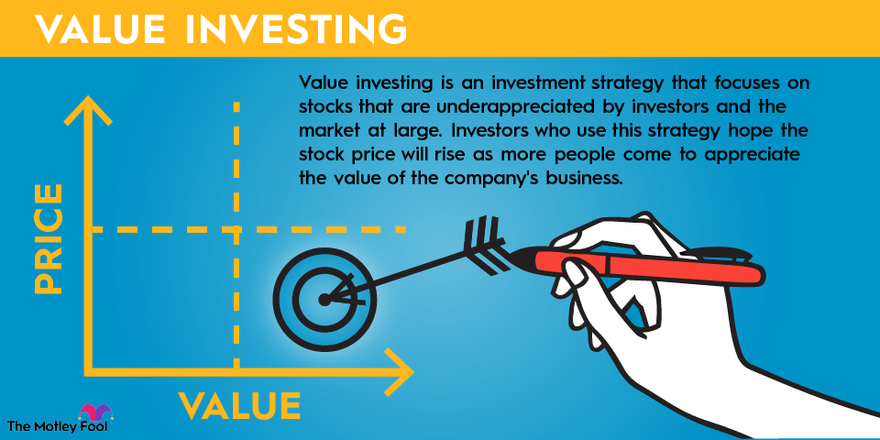Jim Cramer is the face of CNBC's Mad Money television show. In that role, he educates and entertains his audience by exuberantly explaining the latest trends in the financial markets. He also shares his views on which stocks and sectors are poised to outperform and which are about to flop.
Read on to learn how Cramer rose from journalist to hedge fund manager to TV personality, how he invests, and what's in the portfolio he manages today.

Who is Jim Cramer?
Jim Cramer is a television personality and former hedge fund manager who makes investing recommendations for viewers. He grew up in Pennsylvania and developed an early interest in investing, even tracking a portfolio of stocks he picked but didn't own. Reportedly, his fictitious portfolio would have profited by seven figures before he finished elementary school.
In his 20s, Cramer had moved on to investing real money, refining his approach to focus on lesser-known stocks. He made enough in profits to pay for a year of his post-graduate studies at Harvard Law School. By the time Cramer completed his law degree, he was managing money for a Harvard Law faculty member and was ready to start a career in finance.
Cramer worked at Goldman Sachs (GS -0.87%) for three years before he launched the hedge fund Cramer Levy Partners. In 1996, he cofounded financial news website TheStreet. He left the hedge fund a few years later to host syndicated radio show Jim Cramer's Real Money. In 2005, he began his lengthy tenure as host of Mad Money.
Cramer has also written several books, including Get Rich Carefully and Jim Cramer's Real Money: Sane Investing in an Insane World. He sold his interest in TheStreet in 2019.
Jim Cramer's personal stats
- Age: Born on Feb. 10, 1955
- Source of wealth: Former hedge fund founder and manager, author, and television personality
- Marital status: Married
- Residence: Summit, NJ
- Children: Two daughters, one stepdaughter, and one stepson
- Education: Bachelor's degree in government from Harvard University and a Juris Doctor (law) degree from Harvard Law School
Jim Cramer's investment approach
Cramer's investment approach follows opportunity. Whether the market's up or down, he believes there's opportunity somewhere and it's the investor's responsibility to find it. In a bear market, that opportunity could be hiding in a less prominent industry or in a different asset class, such as bonds or cryptocurrency.
Admittedly, being opportunistic is an open-ended strategy that is not easy to teach or implement. Fortunately, Cramer also promotes some specific investing rules to guide his followers and fans.
1. Do your homework
Cramer recommends investors devote sufficient time to researching stocks, both before and after buying them. For pre-buying research, he stresses the importance of learning the business model, understanding the financial statements, appreciating the product value, and researching the leadership team.
After buying a stock, Cramer recommends shareholders spend an hour researching for each stock they own. Instead of "buy and hold," he recommends "buy and homework." Those who can't or won't put in the time may be better suited for lower maintenance index funds.
2. Diversify across sectors
To Cramer, diversification is easy and obvious protection against sector weakness. After all, the investment community is fickle -- one bad news event can bring down an entire industry. When that happens, being diversified protects you from feeling the full force of the downturn.
I can't say a diversified portfolio is bulletproof. But I can say that it makes it easier to stay in the game when one particularly popular group gets put through the meat grinder.
3. Invest in the best in class
Cramer recommends investing in any industry's strongest player. That way, even if the industry falls out of favor temporarily, you know you own the company that will recover first. He compares this strategy to buying quality merchandise over cheaper goods. The quality stuff will last longer and won't need to be replaced as quickly.
4. Know when to buy and when to sell
Cramer is not a buy-and-hold-forever investor. He believes in strategically selling winners and taking profits when the opportunity arises, even if you plan to reinvest in that stock later.
Of course, recognizing those peaks and valleys in the moment is easier said than done. Cramer believes you should know the value of what you own and be ready to trade when the stock price drifts too far from that value.
5. Keep emotions out of it
Cramer says panic leads to poor decision-making. He advises investors to stay grounded and focus on the value of their positions -- rather than the price the market is currently applying. With a clear head, you are more likely to see and act on opportunities in volatile markets.
Jim Cramer's investments
Since Cramer is a stock-picking television personality, he invests his personal wealth in index funds to sidestep any conflicts of interest. He shared his personal allocations in a 2021 interview with AARP. Prior to his 65th birthday, he was invested in 80% U.S. stocks, 10% international stocks, and 10% gold and cryptocurrency.
After turning 65, he shifted to the more conservative composition of 50% cash, 40% U.S. stocks, 5% international stocks, and 5% gold and cryptocurrency.
Cramer's stock recommendations
Cramer makes frequent stock recommendations -- often more than 100 per month. Here are some of the stocks he has been bullish on or has recommended buying.
| Name and ticker | Market cap | Industry |
|---|---|---|
| Alphabet (NASDAQ:GOOGL) | $3.8 trillion | Interactive Media and Services |
| Amazon (NASDAQ:AMZN) | $2.5 trillion | Multiline Retail |
| Apple (NASDAQ:AAPL) | $4.0 trillion | Technology Hardware, Storage and Peripherals |
| Meta Platforms (NASDAQ:META) | $1.7 trillion | Interactive Media and Services |
| Nvidia (NASDAQ:NVDA) | $4.6 trillion | Semiconductors and Semiconductor Equipment |
| Tesla (NASDAQ:TSLA) | $1.5 trillion | Automobiles |
| Uber Technologies (NYSE:UBER) | $169.3 billion | Road and Rail |
Related investing topics
Invest like Jim Cramer
Love him or hate him, Cramer is influential in the investment community. He promotes in-depth research, diversification, and adjusting your approach to market trends as primary investing strategies. His on-air stock picks can be a mixed bag, but he has provided some useful advice, and there aren't many analysts who cover as many companies as Cramer.


















